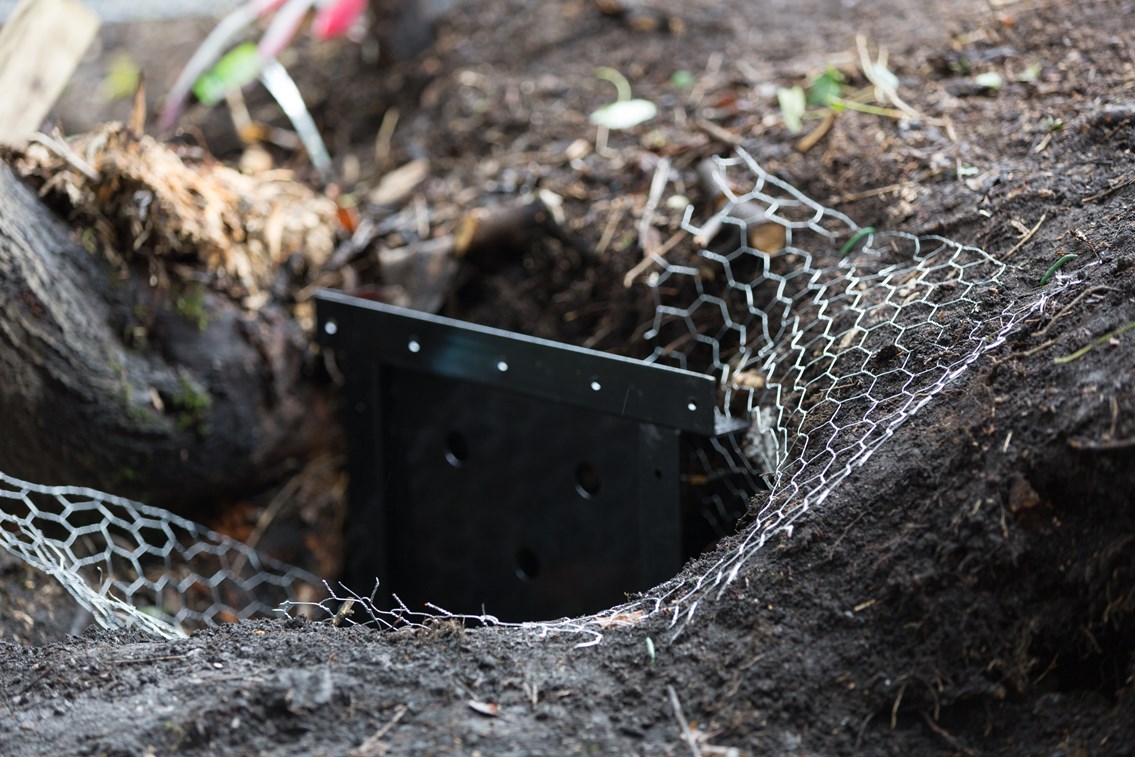Thursday 9 Jan 2020
Badgers sett to keep their homes as railway works around
- Region & Route:
- Scotland’s Railway: Scotland
It’s an important focus for Network Rail to coexist happily with lineside neighbours – no more so than when our neighbours are a protected species.
In the last year alone, Network Rail’s ecologists have worked under licence at more than 50 locations across Scotland to protect badgers from the railway (and vice versa) in order to ensure that these special little creatures came to no harm.
Whether it’s platform works, or installing masts for overhead wires, the type of civil engineering work commonly carried out on the railway can potentially have a negative impact on badger setts.
Ahead of major work, Network Rail carries out environmental surveys which will identify the presence of any protected habitats and species at a very early stage in the project. This information is used to help avoid any potential delays to essential upgrade works as well additional costs that come with it.
Knowledge gathered in surveys can be used by designers to avoid siting equipment in areas which would affect the badger setts – meaning that the little creatures can continue to live alongside the railway and stay in their homes. It also saves time and money for those delivering the project.
James Morrison, a Network Rail ecologist on the Scotland route said; “We always consider wildlife and the environment ahead of major projects so we can approach the work in a way that minimises any environmental impact and helps avoid risk and delay for the project overall.
“Providing simple environmental information enables us to design the railway and deliver projects in a way that considers wildlife already living around it. This saves a lot of time and money and means that any impacted wildlife or habitats can be avoided and, in this case, badgers can keep their homes.
“It is part of Network Rail’s considerate approach to the protecting its lineside and to supporting wildlife and habitats on and around our infrastructure and another example of how we have and will continue to promote biodiversity and the wider environment through our work.”
Badgers are commonly found along the railway network and create homes in embankments and many other areas of railway land. There are occasions when routine operations, maintenance, or enhancement activities could impact on badger territories and affect badgers in a number of ways - including destruction of setts and feeding habitat, and general disturbance by noise and light. The role of our ecologists is to ensure that any of these negative impacts are avoided or mitigated.
Additionally, Badgers have long been persecuted in Britain. Badger baiting involves badgers being dug out of their setts and dogs unleashed on them. Such cruelty has led to strong legal protection for badgers (and their setts).
The usual process, when badgers are found to be living on land where work is due to take place, is to firstly try and find a way of working that avoids having to move them. Where this is not possible and as a last resort, we will move them to a spot where the work will not affect them. This though can be a long process, which involves getting a licence and building new homes for them and can cause significant delays to essential upgrade work and additional costs as well as not being the right solution for the badgers themselves.
This has led to other more innovative solutions being tried, which include ‘training’ badgers to avoid certain ‘satellite’ setts and taking different paths to and from their main sett to avoid coming into contact with the railway. Sites are fenced off and gates are installed on existing paths and baited with peanuts or fruit to encourage the badger to use safe routes to get to and from their forage sites without harm.
Notes to editors
Failure to identify or account for badger occurrence can and does cause costly delays to renewals projects and maintenance tasks and can incur a heavy fine or even a prison sentence,
Both badgers and their setts are protected under the Protection of Badgers Act 1992 as amended by the Wildlife and Natural Environment (Scotland) Act 2011 and is regulated by Scottish Natural Heritage.
Setts are networks of underground tunnels in which badgers live. Most social groups of badgers have a number of setts within the territory that they use.
Contact information
Passengers / community members
Network Rail national helpline
03457 11 41 41
Latest travel advice
Please visit National Rail Enquiries
Journalists
Network Rail press office - Owen Campbell
NR Press Office 0141 555 4108 / 07515 617073
Owen.Campbell1@networkrail.co.uk
About Network Rail
We own, operate and develop Britain's railway infrastructure; that's 20,000 miles of track, 30,000 bridges, tunnels and viaducts and the thousands of signals, level crossings and stations. We run 20 of the UK's largest stations while all the others, over 2,500, are run by the country's train operating companies.
Usually, there are almost five million journeys made in the UK and over 600 freight trains run on the network. People depend on Britain's railway for their daily commute, to visit friends and loved ones and to get them home safe every day. Our role is to deliver a safe and reliable railway, so we carefully manage and deliver thousands of projects every year that form part of the multi-billion pound Railway Upgrade Plan, to grow and expand the nation's railway network to respond to the tremendous growth and demand the railway has experienced - a doubling of passenger journeys over the past 20 years.
Follow us on Twitter: @networkrail
Visit our online newsroom: www.networkrailmediacentre.co.uk

